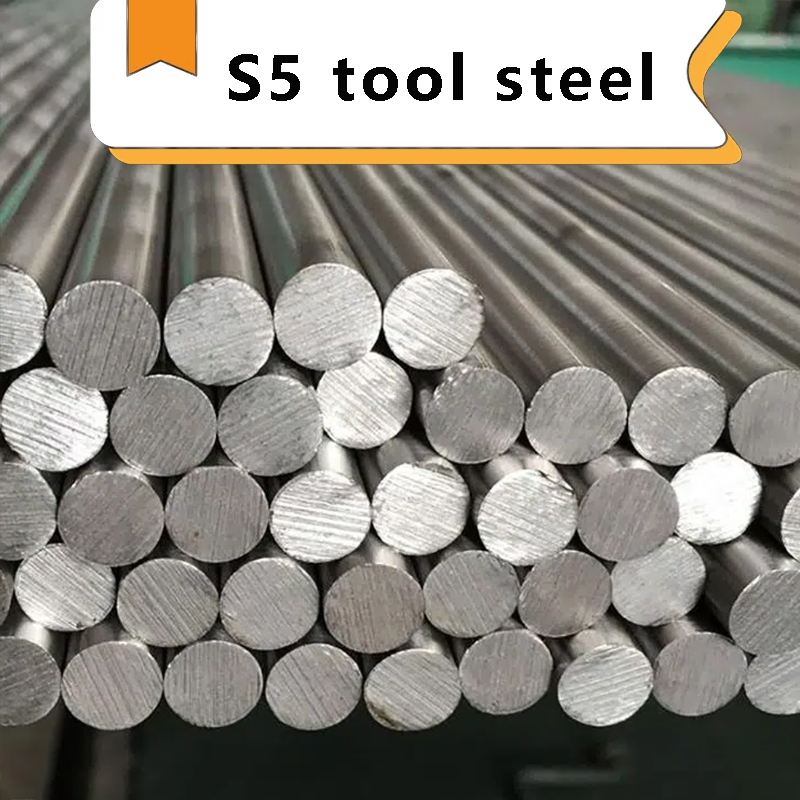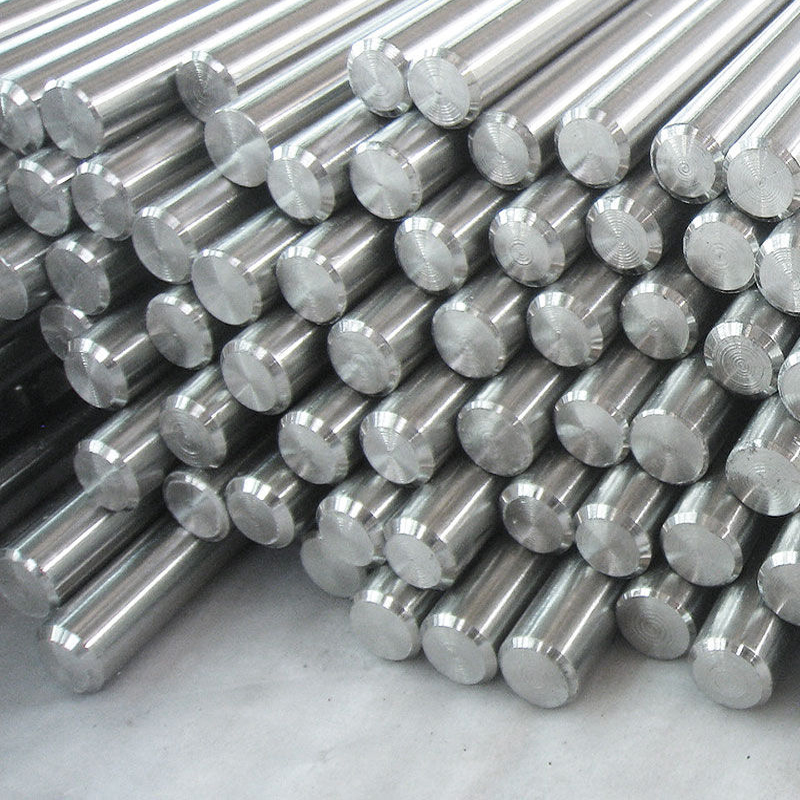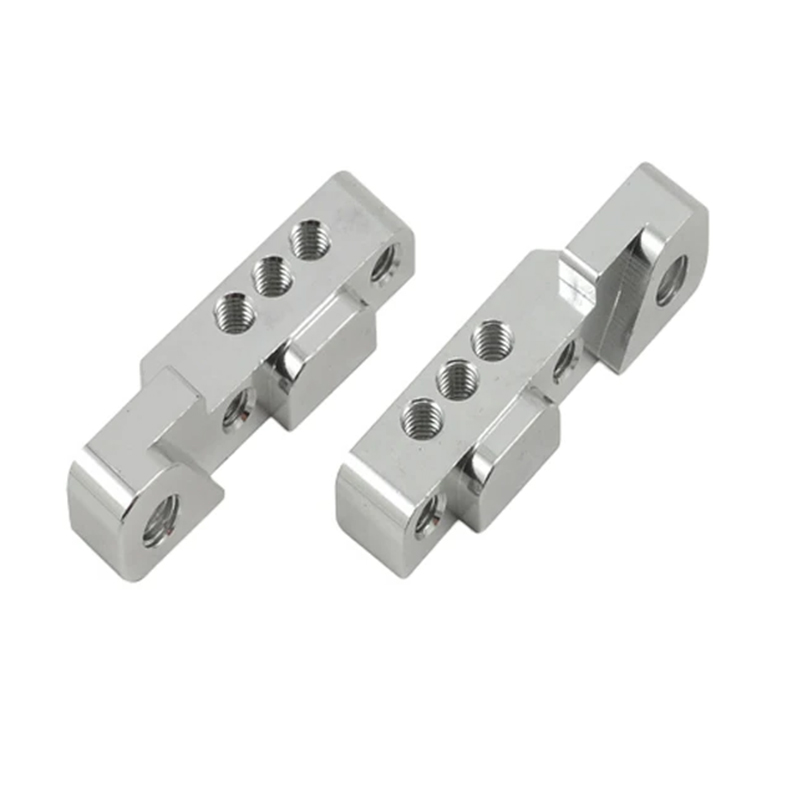What is S5 Tool Steel? Tuofa CNC Machining
 Aug 02,2024
Aug 02,2024

Tool steels are a group of carbon and alloy steels. They are particularly well-suited to be made into tools. Their suitability comes from their distinctive hardness, resistance to abrasion, and ability to hold a cutting edge at elevated temperatures. Among the various tool steel available, S5 tool steel holds a significant place in the manufacturing industry. This is due to its unique combination of toughness and wear resistance. This article delves into the specifics of S5 tool steel. It explores its composition, properties, heat treatment, applications, advantages, and how it compares to other tool steels.
Composition of S5 Tool Steel
S5 tool steel is a shock-resistant grade. It is known for its excellent toughness and relatively good wear resistance. Each of these elements plays a crucial role in determining the properties of S5 tool steel. For instance, chromium and molybdenum contribute to its toughness. Vanadium enhances its wear resistance. The American Iron and Steel Institute (AISI) designation for S5 tool steel is AISI S5. The German DIN standard is 1.2767. The key elements in its composition include:

|
Element |
Percentage |
Contribution to Properties |
|
Medium Carbon |
0.45 - 0.55% |
Provides necessary hardness and strength |
|
Chromium |
0.5 - 1.0% |
Enhances hardenability and corrosion resistance |
|
Molybdenum |
0.15 - 0.30% |
Increases strength, hardness, and toughness |
|
Silicon |
0.2 - 0.3% |
Improves strength and helps deoxidize the steel |
|
Vanadium |
0.15 - 0.3% |
Adds to wear resistance and hardenability |
Properties of S5 Tool Steel
Compared to other tool steels, S5 stands out. It offers a balance between toughness and wear resistance. This makes it a versatile choice for a range of demanding applications. S5 tool steel is known for its unique set of mechanical and physical properties.https://www.tuofa-cncmachining.com/
Mechanical Properties
It offers high toughness, making it suitable for tools that undergo high impact and shock loading. Its medium wear resistance ensures durability in various applications.
Physical Properties
The hardness of S5 tool steel can range between 56-60 HRC (Rockwell Hardness Scale) after proper heat treatment. It also exhibits good machinability and hardenability.
Heat Treatment of S5 Tool Steel
Heat treatment processes significantly enhance the mechanical properties of S5 tool steel, ensuring it performs reliably in its intended applications. The heat treatment process for S5 tool steel involves several steps to optimize its properties.
Annealing
Annealing S5 tool steel involves heating it to a temperature range of 790-850°C (1454-1562°F) and then allowing it to cool slowly. This process relieves internal stresses and softens the steel, making it easier to machine. By softening the steel, annealing improves its machinability and prepares it for further heat treatment processes.
Tempering
Tempering is performed after the steel has been hardened to adjust its mechanical properties. For S5 tool steel, tempering typically occurs at temperatures between 180-350°C (356-662°F). This process improves the toughness of the steel while reducing its brittleness. Proper tempering ensures that the steel can withstand impact and shock loads without fracturing.
Air-Hardening
Air-hardening is a crucial step in the heat treatment of S5 tool steel. This involves heating the steel to a temperature range of 850-900°C (1562-1652°F) and then allowing it to cool in air. Air-hardening provides a uniform hardness and reduces the risk of distortion or cracking. This process enhances the overall strength and toughness of the steel, making it suitable for demanding applications.

Applications of S5 Tool Steel
S5 tool steel is commonly used in applications that require high toughness and resistance to shock loading. Its unique properties make it an excellent choice for various industrial applications. Durability and impact resistance are crucial in these applications.
Impact Tools
S5 tool steel is widely used in the manufacturing of impact tools. Examples include chisels and punches. These tools benefit from S5's high toughness. They can withstand repeated shock loads. This ensures a long service life and reliable performance in demanding conditions.
Cold Work Applications
In cold work applications, S5 tool steel is used for making forming dies and shear blades. These tools require a material that can maintain its integrity under high stress and abrasion. S5 tool steel's balance of toughness and wear resistance makes it an ideal choice for such applications.
Advantages of S5 Tool Steel
S5 tool steel offers numerous advantages for various applications. Its high toughness makes it ideal for tools that must withstand significant impact. Examples include chisels and punches. The steel's good wear resistance ensures that tools made from S5 will have a long service life. This reduces the need for frequent replacements. Additionally, S5's shock resistance makes it suitable for applications where sudden loading occurs. Finally, its versatility allows it to be used in a wide range of industrial applications. This makes it a cost-effective choice for many manufacturers.
Disadvantages of S5 Tool Steel
Despite its many advantages, S5 tool steel has some limitations. It may not perform well in highly corrosive environments. In such cases, materials with better corrosion resistance would be more suitable. Additionally, in applications requiring extremely high temperatures, S5 might not be the best choice. Hot-work tool steels like H13 are more suitable for these conditions. These limitations must be considered when selecting S5 for specific applications. This ensures it meets the environmental and operational demands of the task.
Working with S5 Tool Steel
S5 tool steel is easily machinable. It is also heat treatable. It excels in applications requiring high toughness and impact resistance.
Machinability
S5 tool steel offers good machinability. This allows for easy cutting, shaping, and forming. It maintains toughness and impact resistance throughout the process.
Ease of Machining
S5 tool steel is known for its ease of machining. This allows for efficient and precise cutting, shaping, and forming. It is an ideal choice for a wide range of machining operations. Its machinability is higher compared to some other tool steels. This reduces the overall time and cost associated with production processes. This ease of machining also translates to lower tool wear and maintenance costs.
Heat Treatment
After machining, S5 tool steel can undergo heat treatment processes. These significantly enhance its hardness and durability. This step is crucial for applications that demand high wear resistance and toughness. The heat treatment typically involves heating the steel to a high temperature. This is followed by controlled cooling. This process improves the material's mechanical properties. It makes the steel more suitable for demanding industrial applications.
Tool Wear
To minimize tool wear when machining S5 tool steel, it is essential to use appropriate tooling and machining speeds. Selecting the right cutting tools is crucial. Tools made from carbide or other wear-resistant materials can extend tool life. Additionally, maintaining optimal cutting speeds and feeds reduces the stress on both the tool and the material. This results in more efficient machining and less frequent tool changes.
Surface Finish
S5 tool steel is capable of achieving a high-quality surface finish. This is vital for precision applications. A smooth surface finish is crucial for components that require tight tolerances and minimal friction. Proper machining techniques combined with the material's inherent properties ensure that the finished product meets stringent quality standards. This characteristic is particularly important in industries like aerospace, automotive, and manufacturing.
Coolant Use
Effective use of coolants is essential when machining S5 tool steel. This maintains its machinability and prolongs tool life. Coolants help to dissipate heat generated during the cutting process. This reduces the risk of thermal damage to both the tool and the workpiece. Coolants also aid in removing chips from the cutting area. This prevents clogging and ensures a smoother machining process. Choosing the right type and application of coolant can significantly improve machining performance.
Welding
Welding S5 tool steel involves specific techniques to maintain its properties. Preheating the steel to around 200-300°C (392-572°F) before welding can reduce the risk of cracking. Post-weld heat treatment, such as tempering, is also necessary to restore the steel's toughness. Controlling the heat input during welding is crucial. This avoids rapid cooling, which can lead to weld defects and compromised material properties.
Maintenance and Care
Proper maintenance is essential to prolong the life of tools made from S5 tool steel. Regular inspection for wear and damage is important. Timely reconditioning can enhance tool longevity. Storing tools in a clean, dry environment helps prevent corrosion. Implementing a preventive maintenance schedule is beneficial. This includes cleaning, lubrication, and checking for alignment. Such measures ensure consistent performance and reduce downtime in industrial operations.

S5 Tool Steel vs. Other Tool Steels
S5 tool steel offers high impact toughness. It is suitable for hot work applications. Other tool steels have specific uses and characteristics.
S5 vs. S7 Tool Steel
S5 and S7 tool steels are both shock-resistant. However, they have distinct differences. S7 offers higher shock resistance. It is often used for larger impact tools. In contrast, S5 provides a balanced combination of toughness and wear resistance. This makes it suitable for applications requiring both properties. Understanding these differences helps in selecting the appropriate tool steel for specific applications. This ensures optimal performance and durability.
S5 vs. H13 Tool Steel
H13 tool steel is known for its excellent performance in high-temperature applications due to its hot work properties. S5, on the other hand, excels in cold work and impact applications. While H13 is commonly used in die-casting molds and extrusion dies, S5 is preferred for tools like punches and chisels. The choice between these tool steels depends on the operating environment and specific application requirements.
S5 vs. A2 Tool Steel
A2 tool steel offers higher wear resistance compared to S5, making it ideal for cutting tools and dies. However, A2 lacks the high toughness of S5, which is crucial for impact applications. S5's ability to withstand shock loading makes it suitable for tools subjected to sudden impacts, whereas A2 is better suited for applications requiring sharp edges and long-lasting wear resistance.
S5 Tool Steel Specifications
S5 tool steel features high impact toughness, good wear resistance, and is suitable for shock-resistant and hot work applications.
Standards and Specifications
S5 tool steel adheres to several international standards, ensuring consistent quality and performance. The American Iron and Steel Institute (AISI) designates it as AISI S5, while the German DIN standard is 1.2767.
Availability and Sizing
S5 tool steel is commonly available in various sizes and shapes, including round bars, flat bars, and square bars. These standard sizes cater to a wide range of industrial needs.
Cost Considerations
The cost of S5 tool steel can vary based on several factors. Generally, the price ranges from $3 to $5 per pound. Market demand, production costs, and specific material requirements can affect the overall cost.
Conclusion
S5 tool steel stands out in the tool steel family. This is due to its excellent toughness, shock resistance, and versatility. At Tuofa Manufacturer, we leverage our CNC machining expertise. We deliver precision-engineered components from high-quality S5 tool steel. This ensures optimal performance for your applications. Whether you are considering S5 tool steel for impact tools or cold work applications, understanding its advantages and limitations is crucial. This knowledge helps you make informed decisions. We are committed to delivering high-quality materials. Our expert machining services meet your specific needs.
 Tel/WeChat:
Tel/WeChat:  Email:
Email: 
 Home
Home
 O6 Steel: Properties, Uses and Heat Treatment
O6 Steel: Properties, Uses and Heat Treatment 







